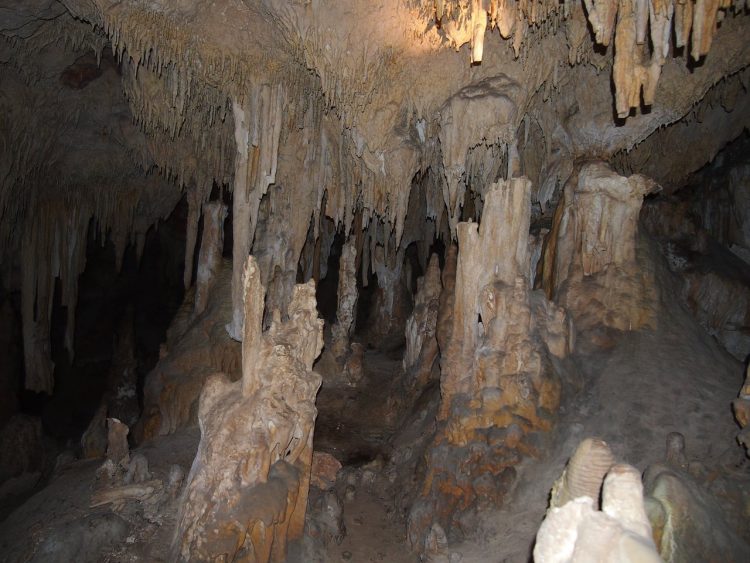Fire clues in cave dripwater

Stalactites and stalagmites in Yonderup cave, where researchers found willdfire clues Andy Baker
This means stalagmites and stalactites work as time capsules that scientists can use to study how the environment changed over the past hundreds or thousands of years.
By looking into the chemistry of the water and the minerals in stalagmites and stalactites, researchers can find information about how the climate was changing above ground as these rocky structures formed.
Now, researchers in Australia and the UK have found that the rocky structures can also be used to help trace past wildfires that burned above the cave. Fires change the chemistry of the water above ground, and these subtle changes leave traces in the stalactites and stalagmites that form when the water drips in the caves underground.
The fire signals in cave dripwater look a lot like the signals for a change in climate, so scientists have to be careful not to confuse the two. The Australian and UK researchers compared the dripwater in a cave that had been affected by fire to dripwater at a cave (about 300 km away) that had the same climate but no fire.
Since the dripwater chemistry was different between the two locations, the researchers knew they had identified the record of a fire rather than a change in climate. This research shows that we can learn more about the Earth’s past from caves than we previously thought.
Find out more: Discuss with your teacher or parents
Why is it important to study caves and what can we learn from them?
How fast do stalagmites and stalactites grow?
To better understand how stalactites and stalagmites form, why not make your own? The simple experiment at http://www.sciencekids.co.nz/projects/stalactite.html will help you find out how minerals deposit to form rocky structures.
If you’d like to learn more about past, present and future climate changes and their impacts, check http://climatekids.nasa.gov/.
This is a kids' version of the EGU press release 'Fire clues in cave dripwater – researchers find wildfire signatures in cave formations for the first time', available at https://www.egu.eu/news/249/fire-clues-in-cave-dripwater-researchers-find-wildfi…. It was written by Bárbara Ferreira (EGU Media and Communications Manager), reviewed for scientific content by Anne Jefferson (Associate Professor, Kent State University, US) and Amelia Bulcock (PhD Student, Loughborough University, UK), and for educational content by Abigail Morton (Teacher, Chiang Rai International School, Thailand). For more information check:
http://www.egu.eu/education/planet-press/.
http://www.egu.eu/education/planet-press/40/fire-clues-in-cave-dripwater/
http://www.egu.eu/news/249/fire-clues-in-cave-dripwater-researchers-find-wildfir…
http://www.egu.eu/education/planet-press
Media Contact
All latest news from the category: Earth Sciences
Earth Sciences (also referred to as Geosciences), which deals with basic issues surrounding our planet, plays a vital role in the area of energy and raw materials supply.
Earth Sciences comprises subjects such as geology, geography, geological informatics, paleontology, mineralogy, petrography, crystallography, geophysics, geodesy, glaciology, cartography, photogrammetry, meteorology and seismology, early-warning systems, earthquake research and polar research.
Newest articles

A universal framework for spatial biology
SpatialData is a freely accessible tool to unify and integrate data from different omics technologies accounting for spatial information, which can provide holistic insights into health and disease. Biological processes…

How complex biological processes arise
A $20 million grant from the U.S. National Science Foundation (NSF) will support the establishment and operation of the National Synthesis Center for Emergence in the Molecular and Cellular Sciences (NCEMS) at…

Airborne single-photon lidar system achieves high-resolution 3D imaging
Compact, low-power system opens doors for photon-efficient drone and satellite-based environmental monitoring and mapping. Researchers have developed a compact and lightweight single-photon airborne lidar system that can acquire high-resolution 3D…





















